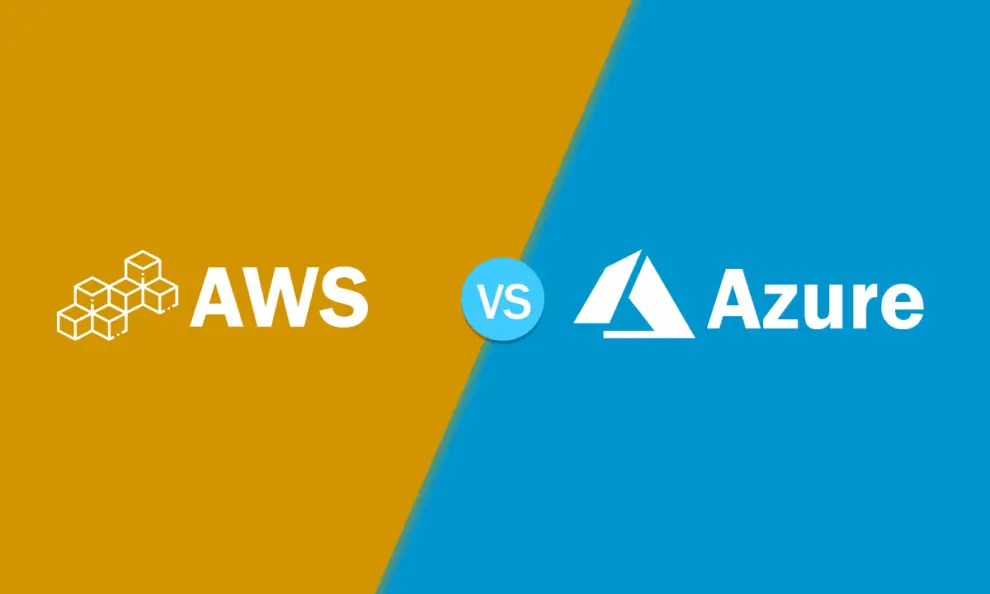AWS and Microsoft Azure are cloud service providers that have more in common than you might think. Cloud storage companies make the world a better place by touching the lives of millions.
Azure and AWS are both superheroes in their own right, but who is the best cloud provider?
A quick glance may convince you that AWS is superior to Azure. But a closer look will show that this is not the case. It is important to consider multiple factors when deciding which cloud service provider is best. These include cloud storage pricing, data loss rate, and data availability rates.
AWS and Azure: The Beginning
In the early 2000s, Amazon was forced to re-examine its development platforms as they catered to their third-party clients. They had built an inefficient IT infrastructure that was cluttered with multiple teams working in silos, often performing the same tasks. The software team at Amazon was able to untangle the mess and replace it with well-documented APIs. The world was still quiet until 2003 when Amazon executives realized they had the skills to manage and operate scalable, efficient data centers. The rest is history.
AWS is the leading provider of cloud services worldwide. It provides IT infrastructure solutions for all companies on an as-needed basis. Prominent companies that utilize AWS include Netflix, Expedia, Hulu, Spotify, and Ubisoft. AWS is a highly customizable and complex platform that is best suited for companies that do not use Windows services.
AWS Cloud Domination
AWS was the clear winner in the AWS vs Azure battle. AWS was first launched in 2002 and its earliest competitor, Google, didn’t arrive until 2009. Microsoft was not the first to enter the cloud market before 2010. Microsoft thought that cloud infrastructure was a passing trend and would soon disappear. Microsoft was forced to catch up after Amazon’s success.
When Azure first launched, it was not received well and faced many challenges, especially when compared to AWS. AWS was in operation for nearly 7 years. As a result, they have more capital, more infrastructure and better and more scalable service than Azure. Amazon was able to add more servers to their cloud infrastructure and make greater use of economies of scale, something that Azure was struggling to do. This was a major setback for Microsoft. Not only was Microsoft no longer the leader in software infrastructure but it was also being given the boot by an IT newbie.
Azure’s Redemption
Azure was quickly reborn. Microsoft quickly revamped its cloud offerings and added support for a wide range of programming languages. They made their systems more flexible and made peace with Linux. Azure is today one of the most popular cloud providers in the globe.
Azure vs AWS: Making the World a Better Place
Amazon and AWS technologies both have contributed in their own ways to society’s welfare.
For example, NASA has used the AWS platform to make its huge repository of pictures, videos, and audio files easily discoverable in one centralized location, giving people access to images of galaxies far away.
Similarly, People in Need, a nonprofit organization, uses AWS to scale an early warning system that alerts about 400,000 people in Cambodia when floods threaten. This technology has saved hundreds of lives and has made it possible to replicate the cost-effective approach in other regions.
The Azure IoT Suite was used to create the Weka Smart Fridge, which keeps vaccinations properly stored. This has allowed nonprofit medical agencies to ensure that vaccinations reach those who otherwise wouldn’t be able to.
Azure is also used to find solutions to the world’s looming freshwater crisis. Nalco Water, Ecolab’s main water operational unit, works with Microsoft Azure to use cloud computing and advanced analysis to find solutions for organizations that reuse and recycle water.
Aggressive Expansions: AWS vs Azure – What to Choose?
Both Azure and AWS are respected members of the cloud domain. They both fight for a bigger share of the cloud pie, and they take the world by storm. Azure holds about 29.4% of all installed application workloads while AWS stands at 41.5 percent and Google holds just 3 percent of all installed application workloads.
AWS’s market share was 47.1 percent in 2017, with Q4 revenue $3.66 billion. Azure’s market share was not higher than 10 percent, with a revenue of $6.9 million. (Of course, Microsoft’s revenues figures are higher since their cloud division includes Azure and Office 365).
Microsoft’s Q1 FY 2018 earnings reports show that Azure revenue grew by more than 90%, which is twice the rate of AWS.
The Future is The Cloud: Have You Prepared?
Cloud computing allows companies to increase their efficiency, lower operational costs and improve interdepartmental collaboration. It also speeds up the time it takes to bring new products to market.
Companies that are not equipped to deal with these changes may fall behind.
To make the transition to the cloud, organizations need to have cloud-certified professionals who are trained on the job. Cloud-based computing is not for everyone. Certified professionals are able to address any concerns and can quickly resolve them.
This has resulted in a large demand for qualified employees. LinkedIn reports that cloud and distributed computing topped the list of sought-after skills in both 2016 and 2017. Dice reports that job listings for the AWS cloud platform increased by 76 percent between 2015 and 2016. In 2015, 3.9 million jobs were affiliated with cloud computing in the United States and over 18 million worldwide. Salaries for qualified professionals are competitive and high. According to Forbes, jobs in cloud computing are well compensated with an average salary of $125,591 for professionals who have gone through the AWS training and certification.
AWS and Azure are both considered adaptable, reliable, and resolute, much like superheroes we all admire. They help us solve global problems and make our lives easy. They are flexible and can help companies and governments with various logistical and social problems. While superheroes are great for keeping their citizens safe and secure, cloud service providers such as AWS and Azure allow professionals to revolutionize their industry without breaking the bank. Companies like Uber, Salesforce, or Facebook can now exist thanks to cloud systems. These are all services that we take for granted today.







